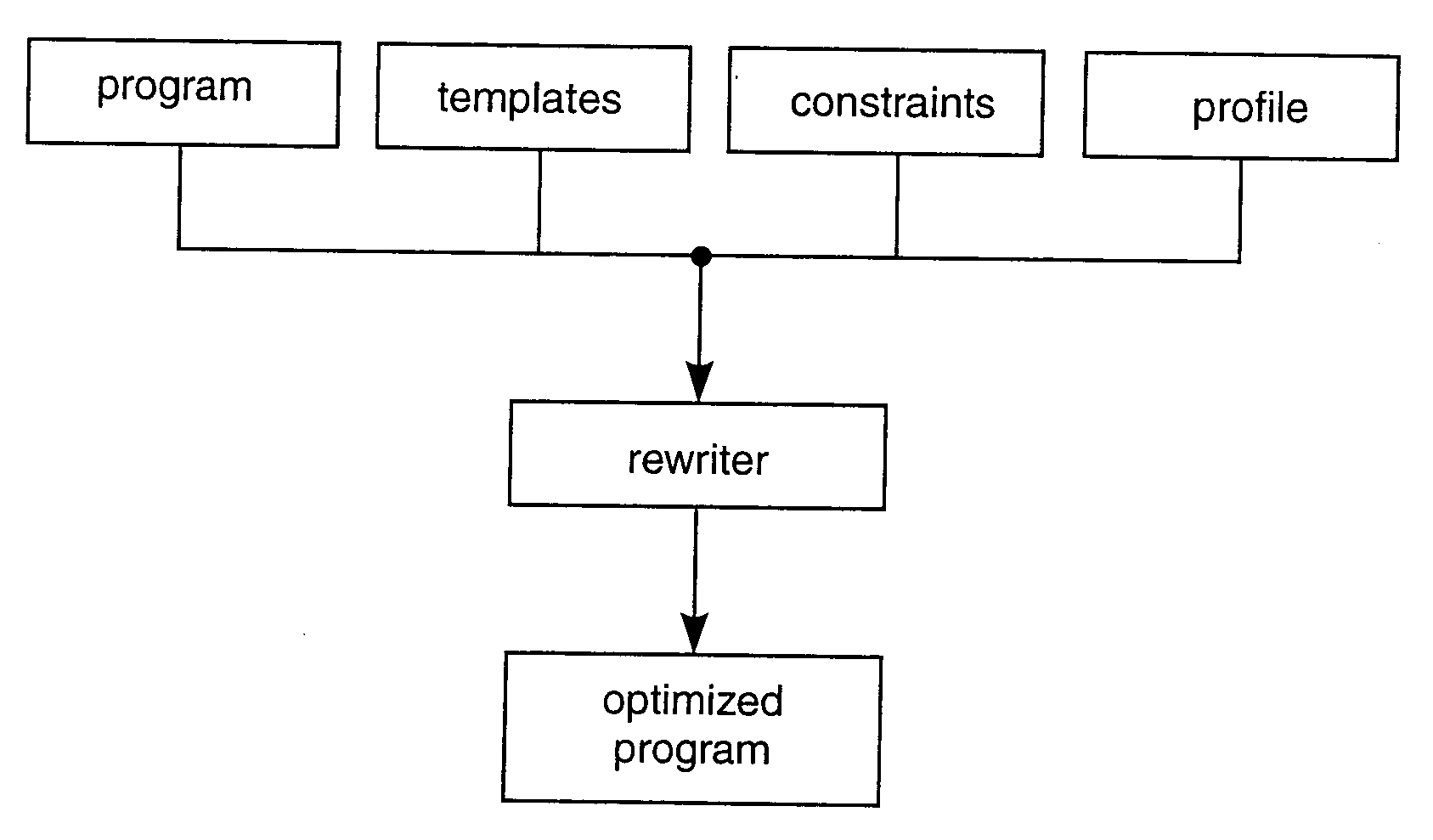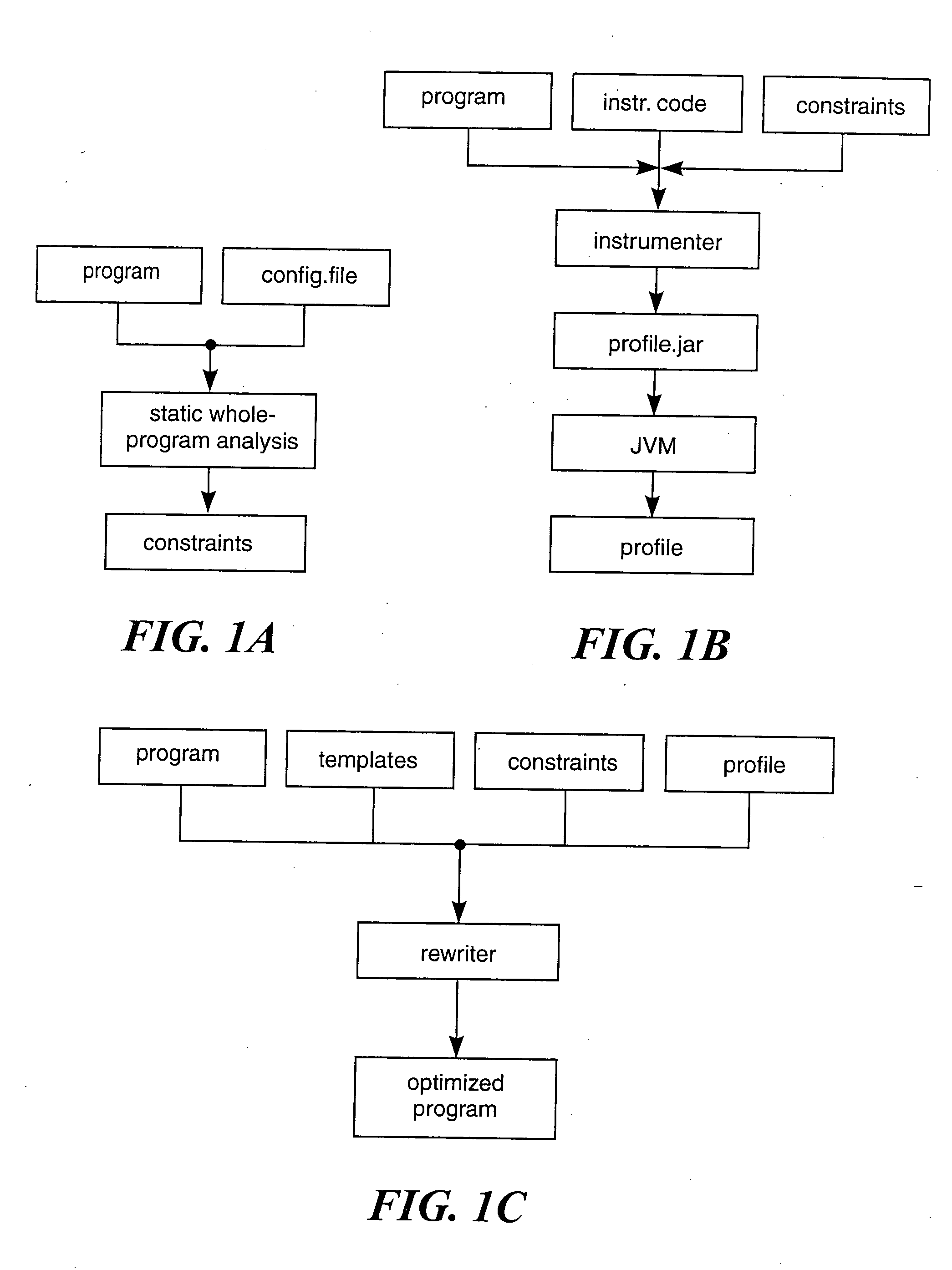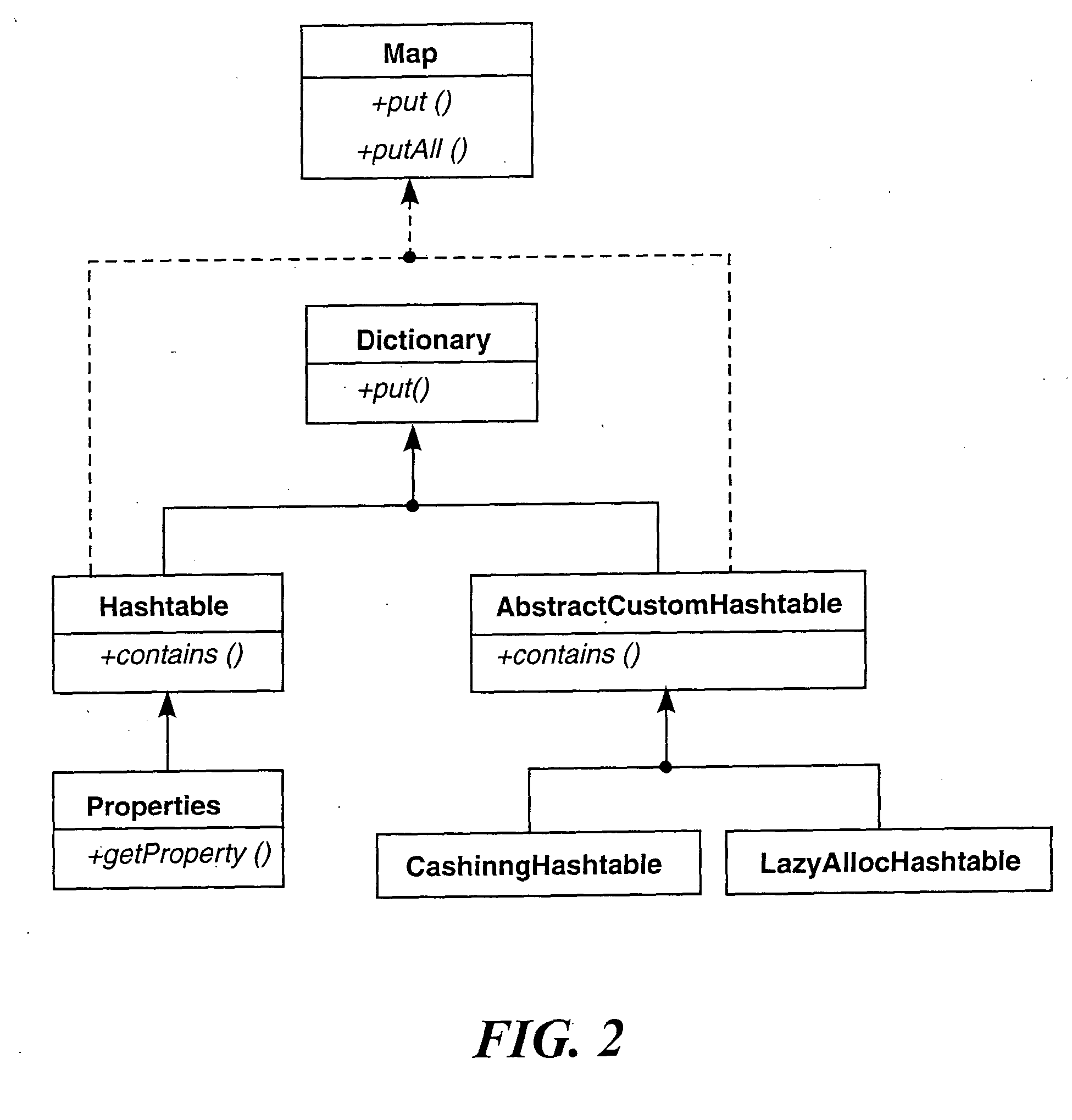Automatic customization of classes
a technology of automatic customization and class hierarchy, applied in the field of programming, can solve problems such as suboptimal performance, and achieve the effect of improving program efficiency
- Summary
- Abstract
- Description
- Claims
- Application Information
AI Technical Summary
Benefits of technology
Problems solved by technology
Method used
Image
Examples
example 3.4
For example program P1 of FIG. 3a, the following points-to information can be computed using a variation on the flow-insensitive, context-insensitive 0-CFA algorithm that propagates allocation sites rather than types.
PointsTo(P1, h1)={H1}
PointsTo(P1, h2)={H1, H3, P1}
PointsTo(P1, h3)={H3}
PointsTo(P1, h4)={H3}
PointsTo(P1, ∘)={H3, S1}
PointsTo(P1, p)={P1}
PointsTo(P1, s)={S1}
(For more general information, please see Palsberg, J. Type-based analysis and applications. In Proc. ACM Workshop on Program Analysis for Software Tools and Engineering (PASTE'01) (Snowbird, Utah, 2001), pp. 20-27, each reference is hereby incorporated by reference in its entirety.)
Here, P1 represents the allocation site(s) at which the Properties objects returned by System.getProperties( ) are allocated.
Type Constraints
As a first step towards demonstrating that customization preserves program behavior, the customized program is type-correct must be ensured. To do so, an existing framework of type co...
example 3.5
FIG. 6 shows the hierarchy for the example program of FIG. 3a after extending it with classes CustomHashtable and CustomProperties, and with additional types Hashtableτ, Hashtable⊥, Propertiesτ and Properties⊥.
Restricting the Types of Allocation Sites
The original program always allocates an object of type C at an allocation site new C(E1 . . . , En), as was reflected by rule (22) in FIG. 5. In the transformed program, solutions are allowed where the allocated object is either of type C or of type CustomC. To this end, rule (22) is replaced with rules (22)(a)-(22)(c) shown in FIG. 7.
example 3.6
FIG. 8(a) shows all non-trivial type constraints for the example program of FIG. 3(a). For convenience, each constraint in FIG. 8(a) is annotated with the line number(s) in the source code from which it was derived, and with the number of the rule(s) in FIG. 5 responsible for the creation of the constraint.
Constraint Simplification
In order to simplify the process of constraint solving, a step is first preformed in which all constraints are reduced to the simple forms [x]≦[y], [x]=[y], and [x][y]. This means that constraints of the forms [E]≦C1 or . . . or [E]≦Ck and [E′][(C) E] generated using rules (4) and (26) have to be rewritten to the preferred forms.
Simplification of or-Constraints
A virtual method call E.m(E1, . . . , En to a method M gives rise to an or-constraint [E]≦C1 or . . . or [E]≦Ck if [E] has multiple supertypes C1, . . . , Ck in which method m( . . . )is declared such that there is not a single method M that is overridden by all Ci.m( . . . ),for all i, 1≦i≦...
PUM
 Login to View More
Login to View More Abstract
Description
Claims
Application Information
 Login to View More
Login to View More - R&D
- Intellectual Property
- Life Sciences
- Materials
- Tech Scout
- Unparalleled Data Quality
- Higher Quality Content
- 60% Fewer Hallucinations
Browse by: Latest US Patents, China's latest patents, Technical Efficacy Thesaurus, Application Domain, Technology Topic, Popular Technical Reports.
© 2025 PatSnap. All rights reserved.Legal|Privacy policy|Modern Slavery Act Transparency Statement|Sitemap|About US| Contact US: help@patsnap.com



